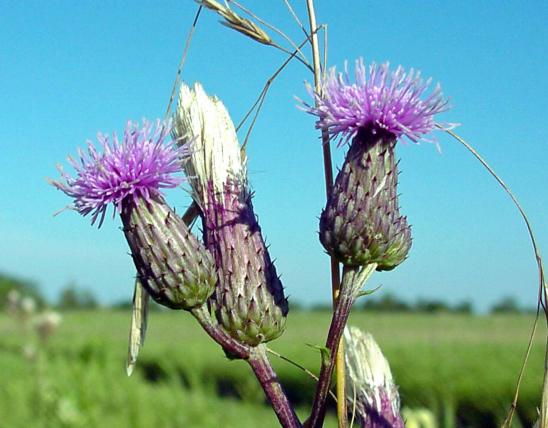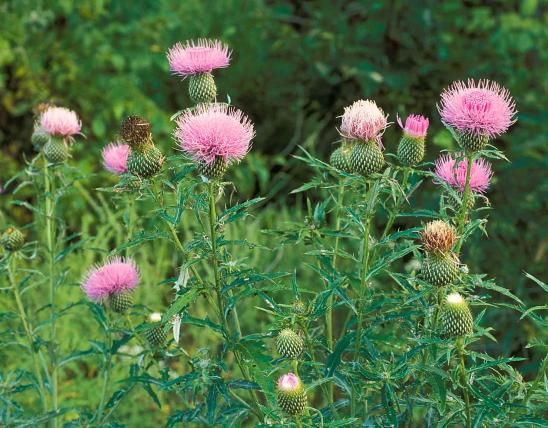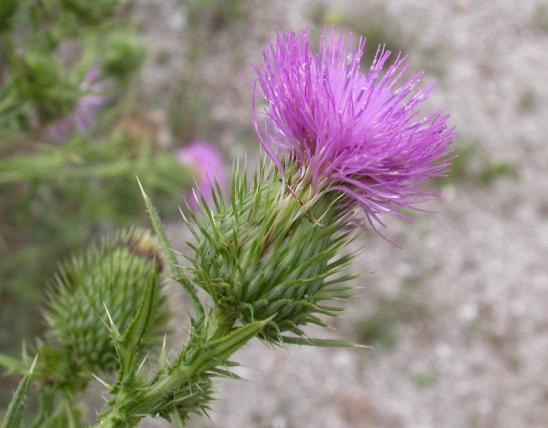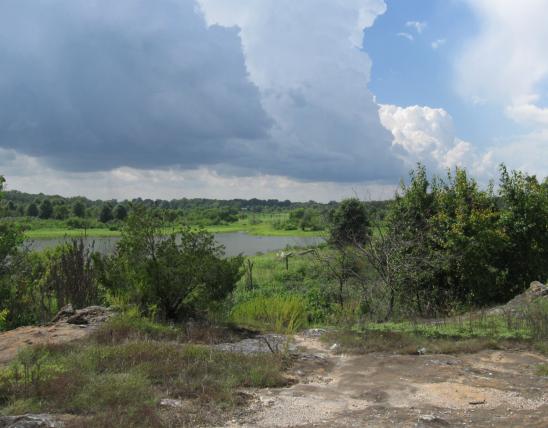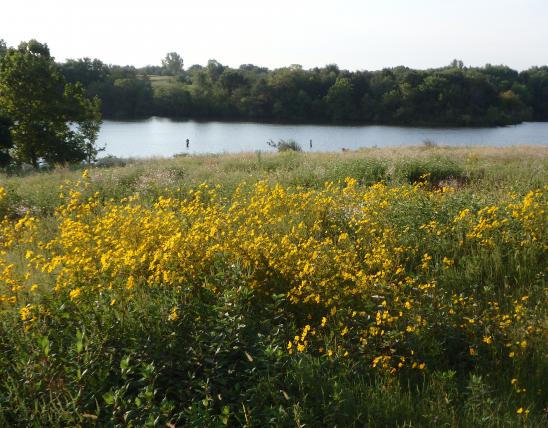
Rattlesnake master is a spiny, herbaceous perennial with a branching inflorescence carried on a tall, straight stem. Flowerheads dense, ball-shaped, about 1 inch wide, and subtended by bracts. Individual flowers tiny, greenish white, each with its own minute bract. Blooms July–August. Leaves yucca- or agave-like, the lower ones to 3 feet long, much shorter along the stems, bluish, linear, parallel veined, with small spines along the margins.
Similar species: There are three species of Eryngium (eryngo) in Missouri, but the other two cannot be confused with rattlesnake master. You are more likely to confuse it with a yucca or a thistle. Yuccas in Missouri have tough, leathery leaves that grow only from the basal rosette (not on the stem). Thistles typically have toothed, pinnately lobed leaves and flowers clustered atop a receptacle subtended with numerous overlapping spiny bristles.
Height: to 4 feet.

Scattered to common nearly statewide, but apparently absent from the Southeast Lowlands.
Habitat and Conservation
Occurs in upland prairies, glades, savannas, and rocky openings of moist to dry upland forests. Rattlesnake master is one of the signature plants of the tallgrass prairie, a habitat that used to cover about half of our state before it was settled and the prairies turned into crop fields or allowed to become forest.
Status
Rattlesnake master is in the same family as carrots, parsley, celery, fennel, dill, cilantro, cumin, anise, Queen Anne's lace, and the deadly poisonous common water hemlock.
Human Connections
Native Americans used this plant medicinally for treating a variety of ailments, as well as a source of fiber for cordage, bags, cloth, and sandals. In folk medicine, an extract of the root was thought to be effective against snake venom, thus the common names.
Ecosystem Connections
A huge variety of insects, including bees, flies, wasps, beetles, and butterflies, visit the flowers for nectar. Finches apparently eat the seeds. The plant’s spines probably discourage herbivorous mammals, and the long fibers in the leaves ward off leaf-eating insects.



































